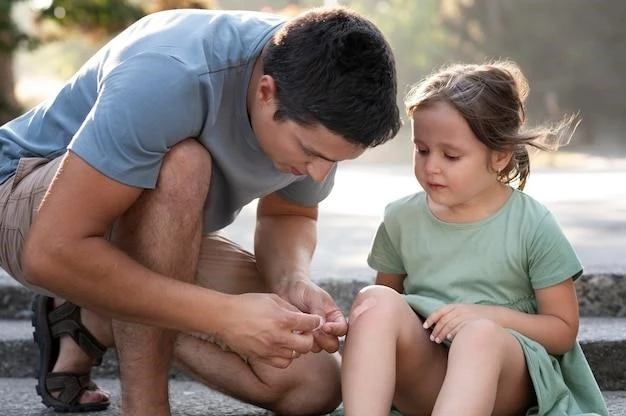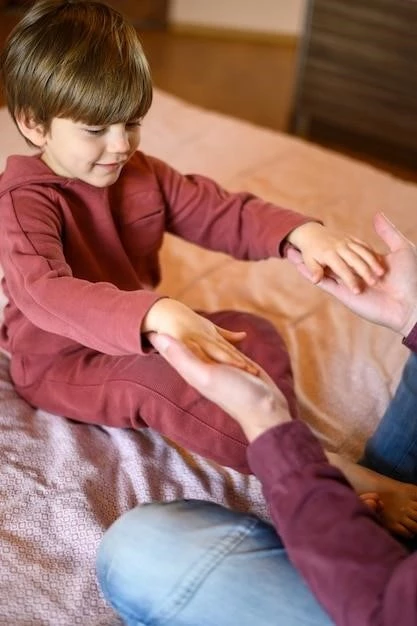Overview of Pauciarticular Chronic Arthritis
Juvenile idiopathic arthritis (JIA) is a common chronic rheumatic disease affecting children under 16. The ILAR classification outlines seven subtypes, including oligoarticular JIA, characterized by involvement of up to four joints.
Definition and Classification
Pauciarticular chronic arthritis is a subtype of juvenile idiopathic arthritis (JIA) affecting children under 16, characterized by inflammation in up to four joints. This form of JIA falls under the ILAR classification, which includes seven subtypes of arthritis with unknown causes occurring in children aged 16 and under for at least six weeks.
Juvenile idiopathic arthritis (JIA), including pauciarticular chronic arthritis, is the most common chronic rheumatic disease in children under 16 years old. Nearly one in a thousand children may develop some form of chronic arthritis, with pauciarticular arthritis being a common subtype affecting up to four joints. This type of arthritis usually appears in children at a later stage, typically beyond the initial months of life.
Symptoms and Diagnosis
Juvenile idiopathic arthritis (JIA) typically causes joint inflammation, stiffness, and pain in children under 16. Diagnosing JIA involves assessing symptoms like joint swelling and limited motion, often requiring blood tests, imaging, and meeting specific duration criteria.
Prevalence in Children
Pauciarticular chronic arthritis, a subtype of juvenile idiopathic arthritis, affects approximately 1 in a thousand children. While it’s uncommon in infants, it typically emerges later in childhood impacting up to four joints and may present as oligoarthritis with joint inflammation.
Diagnostic Criteria for Juvenile Idiopathic Arthritis
Diagnosing juvenile idiopathic arthritis (JIA), including pauciarticular chronic arthritis, involves several criteria. This includes monitoring symptoms like joint swelling, stiffness, and pain lasting for at least six weeks in a child younger than 16. Doctors may perform blood tests like ESR and CRP to check for inflammation and conduct imaging tests such as X-rays or ultrasounds to assess joint damage and inflammation.
Blood Tests and Imaging for Diagnosis
Diagnosis of pauciarticular chronic arthritis often involves blood tests like the erythrocyte sedimentation rate (ESR) and C-reactive protein (CRP) to gauge inflammation levels. Additionally, doctors may use imaging tests such as X-rays and ultrasounds to assess joint damage and inflammation, aiding in accurate diagnosis.

Subtypes of Pauciarticular Chronic Arthritis
Oligoarticular Juvenile Idiopathic Arthritis (JIA) is a common type affecting children under 16٫ causing inflammation and pain in up to four joints٫ such as the knees٫ ankles٫ wrists٫ or elbows.
Oligoarticular Juvenile Idiopathic Arthritis
Oligoarticular Juvenile Idiopathic Arthritis (JIA) is a type of arthritis affecting children under 16, commonly involving up to four joints such as knees, ankles, wrists, or elbows. It is essential for the diagnosis to assess symptoms, inflammation, and joint pain, triggering the need for appropriate treatment options.
Persistent vs. Extended Oligoarthritis
Oligoarticular Juvenile Idiopathic Arthritis (JIA) can manifest as persistent oligoarthritis affecting up to four joints consistently or transition to extended oligoarthritis after six months, involving more than four joints. Early detection and accurate classification are crucial for appropriate management strategies.
Causes and Risk Factors
The exact cause of pauciarticular chronic arthritis, specifically oligoarticular JIA, is not fully understood. It is believed to involve genetic predisposition and environmental factors triggering immune system responses. Girls under 8 years old are more likely to develop this condition.
Autoimmune Component of the Disease
Nearly one in a thousand children can develop some type of chronic arthritis, such as pauciarticular chronic arthritis. This condition often involves an autoimmune response, where the immune system mistakenly attacks the body’s own tissues, contributing to joint inflammation and pain.
Genetic Predisposition and Environmental Triggers
Pauciarticular chronic arthritis, specifically oligoarticular JIA, is believed to have a multifactorial etiology involving a genetic predisposition combined with environmental triggers. Children, especially girls under eight years old, with susceptible genetic markers may develop the condition in response to various environmental factors that stimulate an autoimmune response.
Treatment Options
Treatment options for pauciarticular chronic arthritis include medications, surgical interventions for severe cases, and non-medical treatments like physical therapy and occupational therapy. Proper management can help alleviate symptoms and improve quality of life in affected children.
Medications for Managing Symptoms
Pauciarticular chronic arthritis, specifically oligoarticular JIA, can be managed with various medications to alleviate symptoms. Common drugs prescribed include nonsteroidal anti-inflammatory drugs (NSAIDs) to reduce pain and inflammation, disease-modifying antirheumatic drugs (DMARDs) to slow disease progression, and corticosteroids to manage flare-ups effectively.
Surgical Interventions for Severe Cases
In severe cases of pauciarticular chronic arthritis, surgical interventions may be necessary. Procedures can include joint repairs, replacements, or corrections to address joint damage or deformities, improving function and relieving pain in affected children. Surgical options are considered when other treatment modalities have not provided sufficient relief.
Non-Medical Treatments like Physical Therapy and Occupational Therapy
Non-medical treatments play a vital role in managing pauciarticular chronic arthritis. Physical therapy focuses on exercises to improve joint function, strength, and flexibility. Occupational therapy aims to help children with daily activities and learn techniques for pain management, enabling them to cope with the challenges of the condition effectively.

Complications and Prognosis
Pauciarticular chronic arthritis may lead to complications like eye inflammation (uveitis) and affect a child’s long-term outlook. Prompt diagnosis and proper management significantly impact the prognosis and quality of life for children with this condition.
Eye Complications such as Uveitis
Children with pauciarticular chronic arthritis are at risk of developing eye complications like uveitis, an inflammation that can cause blurry vision and eye pain. Regular checkups with an ophthalmologist are essential to monitor and prevent potential visual impairments or blindness in affected children.
Long-Term Outlook for Children with Pauciarticular Chronic Arthritis
Children diagnosed with pauciarticular chronic arthritis face a varied long-term outlook. Early detection, proper treatment, and ongoing management significantly influence the prognosis, helping to minimize joint damage, control symptoms, and maintain quality of life. Regular monitoring and adherence to treatment plans are essential to ensure the best possible outcome for children with this condition.
